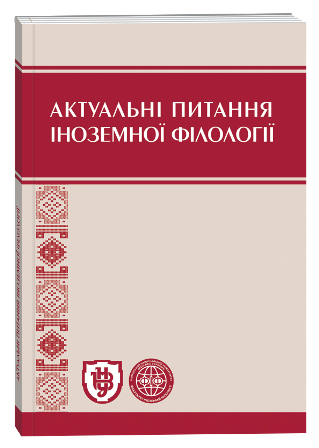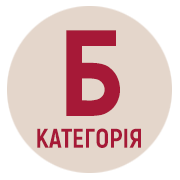GNOSTIC IDEAS IN DAN BROWN’S NOVEL “THE DA VINCI CODE”
DOI:
https://doi.org/10.32782/2410-0927-2023-19-7Keywords:
Gnosticism, secularization, heresy, paranoid subject, simulacrum.Abstract
The article examines the dogmatic of understanding the image of Christ and Christianity from the standpoint of the inspiration of Gnostic ideas. It is shown that Gnosticism, as an early Christian heresy, is a synthetic doctrine that combines philosophy, religion and mythology. It has been established that the implementation of eccentric considerations regarding the New Testament is associated with the figure of a patron opposed to the French authorities, a & quot; paranoid subject" Lew Teabing. The hero is convinced that the Bible is the result of a critical reinterpretation of the text by the pagan emperor Constantine the Great. The businessman is trying to prove the main discovery of Gnosticism – the interaction of the church and the state among early Christians was realized through the distortion of the message of Jesus Christ and the change in the status of Christ. Postulates that record attacks on Christianity and the eccentric reasoning of the hero are: – The Bible is not the Word of God, but a collective human creation that was transformed in the course of the history of development; – The Bible is a textual adaptation and ideological transformation of the text by the emperor; – The political will of the Byzantine ruler and the First Council of Nicaea, where the date of Easter, the role of bishops, baptism (parts of the Creed) and the divinity of Jesus Christ were confirmed by church hierarchs, became the starting point for the distortion of the ideas of Christianity. – The canon of the New Testament is formed from a limited range of candidate texts; – The Catholic rite imitates pagan rituals; – Jesus Christ is not God, but a man, a married man, a father. The presentation of the spiritual principles of civilization – the ideology of Christianity, paganism and secularism – is represented by three figures: the curator of the Louvre, Jacques Saunier, embodies the pagan doctrine, professor Robert Langdon embodies secular trends, and the bishop of Aringoros and the albino monk Silas represent Christianity. In Christian Europe, the ideas of paganism were transformed by the process of secularization and turned into a hidden message for conspiratorially initiated organizations. Teabing-Langdon believes that the conceptual ideas of paganism continue to exist in society and institutions. It has been established that the verification of Gnostic ideas takes place through the description of architectural monuments and visual works of art. The modeling of the simulacrum concept of the relationship between Jesus and Magdalene is reflected in the carnal dimension. Indifference to sexual life in a discrete ekphrastic comment is replaced by an aggressive sexual drive.
References
Браун Д. Код да Вінчі Харків : Книжковий клуб «Клуб сімейного дозвілля», 2006. 809 с.
Гіденс Е. Соціологія Київ : Основи, 1999. 726 с.
Ікалюк Л., Катерняк О. Алюзія як засіб реалізації категорії інтертекстуальності в романі Дена Брауна «Код да Вінчі» URL: http://journals.uran.ua/index.php/2308-4855/article/view/195814/196137 (дата звернення: 25.10.2023)
Овсюк О. Загадки і таємниці роману Дена Брауна «Код да Вінчі» [Електронний ресурс]. URL: http://www. vsesvit-journal.com/old/content/view/433/41 (дата звернення: 25.10.2023)
Томоруг О. М. Євангельські мотиви у світовій літературі Релігія та Соціум. 2013. № 1(9). С. 150–157.
Томоруг О. М. Жанрова своєрідність трансформаційного діапазону євангельських структур / Наукові праці Кам'янець-Подільського національного університету імені Івана Огієнка. Філологічні науки. 2012. Вип. 31. С. 348–351. URL: http://nbuv.gov.ua/UJRN/Npkpnu_fil_2012_31_101 (дата звернення: 25.10.2023)
Черник О. О. Романи Дена Брауна: жанр та концептосфера Вісник КНЛУ. Серія Філологія. Том 19. № 1. 2016. С. 146–152 URL: http://philmessenger.knlu.edu.ua/article/view/84130/79586 (дата звернення: 25.10.2023)
Burstein D. Secrets of The Code N. Y.: CDS Books, 2004. 373 p.
David F. Lloyd Is the “Da Vinci Code based on fact, or are its author’s claims of accuracy the novel’s greatest
fiction? [Електронний ресурс]. URL: http://www.vision.org/visionmedia/Facing_Facts.aspx (дата звернення: 25.10.2023)
Ehrman V.D. Truth and Fiction in “The Da Vinci Code Oxford: Oxford University Press, 2006. 207 p.







